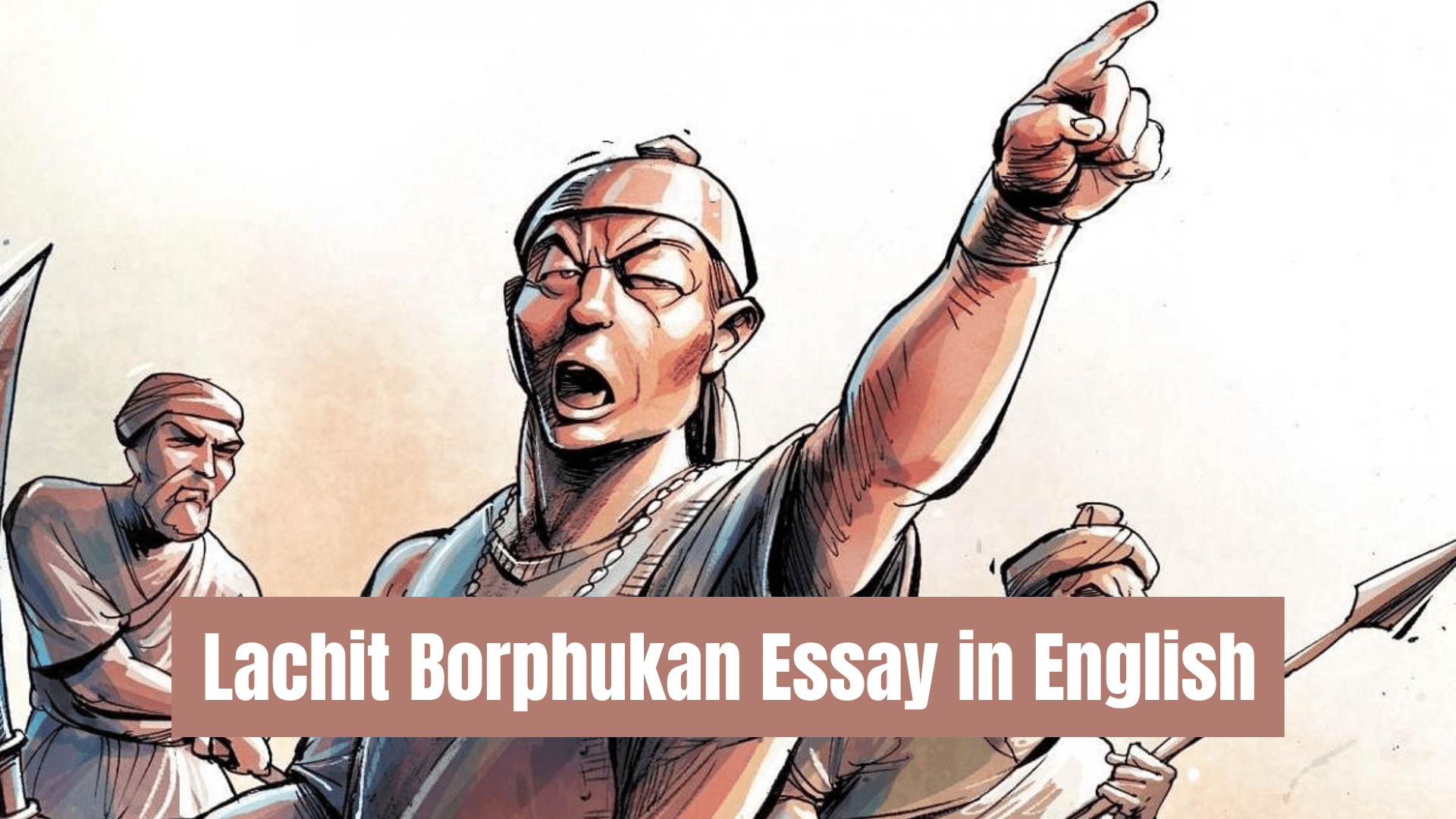Lachit Barphukan, also known as Lachit Borphukan, was a brave warrior and commander in the Ahom Kingdom of Assam during the late 17th century.
He is widely regarded as one of the greatest heroes in Assamese history for his role in defending the kingdom against the Mughal Empire. Lachit Barphukan’s leadership and military prowess have been celebrated for centuries, and his legacy continues to inspire the people of Assam to this day.
ALSO READ: Lachit Borphukan Essay in Assamese
Lachit Barphukan was born in 1622 in Guwahati, the capital of the Ahom Kingdom, to Momai Tamuli Borbarua, a high-ranking official in the Ahom court.
Lachit Barphukan received his early education in the court and was trained in the art of warfare from a young age. His father, Momai Tamuli Borbarua, was also a renowned general who had served under King Pratap Singha, and Lachit Barphukan followed in his footsteps by joining the Ahom army as a young man.
Lachit Barphukan’s rise to prominence came during the reign of King Chakradhwaj Singha, who ascended to the throne in 1670. At the time, the Mughal Empire, led by Emperor Aurangzeb, was expanding rapidly and had set its sights on the rich and fertile region of Assam.
In 1667, the Mughals had captured the fort of Pandu, located just across the Brahmaputra River from Guwahati. This was a major blow to the Ahom Kingdom, as Pandu had served as an important military outpost and had allowed the Ahom army to monitor the movements of the Mughal forces.
As the Mughal threat loomed larger, King Chakradhwaj Singha appointed Lachit Barphukan as the commander-in-chief of the Ahom army. Lachit Barphukan was tasked with defending the kingdom and repelling the Mughal invasion.
He immediately set about fortifying the kingdom’s defenses and training his soldiers for battle. Lachit Barphukan was a strict disciplinarian who demanded the utmost loyalty and bravery from his troops.
He was also a master strategist who carefully studied the Mughal tactics and planned his counterattacks accordingly.
The first major battle between the Ahom and Mughal forces took place in 1669 near the town of Saraighat, located on the Brahmaputra River.
The Mughals had sent a large fleet of boats to attack Guwahati, but Lachit Barphukan was ready for them. He had stationed his troops along the riverbanks and had dug trenches and erected bamboo barriers to block the Mughal boats.
Lachit Barphukan himself led a small flotilla of boats and engaged the Mughals in a fierce battle on the river. Despite being outnumbered, Lachit Barphukan’s troops were able to sink many Mughal boats and force the rest to retreat. This was a major victory for the Ahom Kingdom and a sign of things to come.
Over the next few years, Lachit Barphukan continued to lead the Ahom army in a series of battles against the Mughals. In 1671, the Mughals launched a massive invasion of Assam, with a force of over 100,000 soldiers led by the governor of Bengal, Mir Jumla.
The Mughals had advanced weapons and a highly organized army, while the Ahom soldiers were largely farmers and fishermen who had been conscripted into the army.
Despite the odds, Lachit Barphukan remained undaunted. He rallied his troops and planned a series of surprise attacks on the Mughals, using the rugged terrain and the natural defenses of the region to his advantage.
One of his most famous exploits was the Battle of Itakhuli, which took place on the outskirts of Guwahati. The Mughals had set up their camp on a hill called Itakhuli, which overlooked the city. Lachit Barphukan knew that the Mughals would have a strategic advantage if they were allowed to hold this position, so he decided to launch a daring nighttime attack.
Under the cover of darkness, Lachit Barphukan and his troops climbed the steep hill and surprised the Mughals, who were caught off guard and forced to retreat. The Battle of Itakhuli was a turning point in the war, as it demonstrated that the Ahom soldiers were capable of defeating the highly-trained Mughal army.
Despite his many successes, Lachit Barphukan was not able to completely defeat the Mughals. The war continued for several more years, and Lachit Barphukan fell ill and died in 1672, at the age of 50.
However, his legacy lived on, and his leadership and bravery inspired the Ahom soldiers to continue fighting against the Mughals. In 1682, the Mughals were finally defeated by the Ahom army, and Assam remained free from foreign invasion for several more decades.
Lachit Barphukan’s contribution to Assamese history cannot be overstated. He was a true patriot who dedicated his life to defending his homeland against foreign aggression. His leadership and military tactics were instrumental in the Ahom victory over the Mughals, and his legacy continues to inspire the people of Assam to this day.
Lachit Barphukan is celebrated as a hero and a symbol of Assamese resistance against foreign oppression.
In conclusion, Lachit Barphukan was a great warrior and commander who played a pivotal role in the defense of the Ahom Kingdom against the Mughal Empire. His leadership and military prowess were instrumental in several key battles, and his legacy continues to inspire the people of Assam to this day.
Lachit Barphukan’s life and achievements are a testament to the power of courage, dedication, and patriotism. He will always be remembered as one of the greatest heroes in Assamese history.



1 thought on “Lachit Borphukan Essay in English”